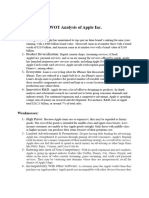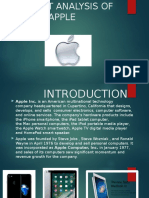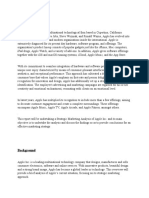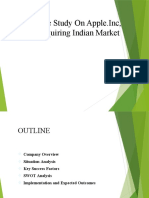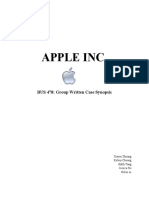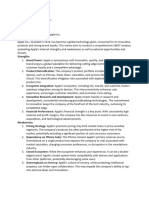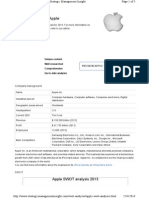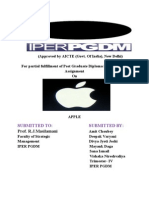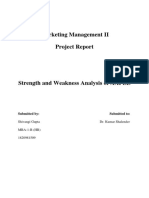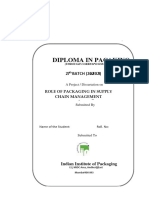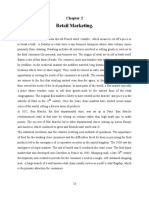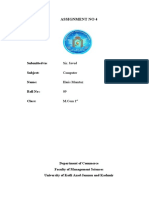0% found this document useful (0 votes)
13 views10 pagesSWOTanalysisand Encapsulationof Apple Business Model
The document presents a SWOT analysis of Apple Computer Inc., detailing its strengths, weaknesses, opportunities, and threats, along with an encapsulation of its business model. It highlights Apple's brand equity, product variety, and challenges such as high prices and market share loss. The study aims to explore various aspects of Apple's business, including customer segments, value propositions, and revenue streams.
Uploaded by
Vaibhav SonavaneCopyright
© © All Rights Reserved
We take content rights seriously. If you suspect this is your content, claim it here.
Available Formats
Download as PDF, TXT or read online on Scribd
0% found this document useful (0 votes)
13 views10 pagesSWOTanalysisand Encapsulationof Apple Business Model
The document presents a SWOT analysis of Apple Computer Inc., detailing its strengths, weaknesses, opportunities, and threats, along with an encapsulation of its business model. It highlights Apple's brand equity, product variety, and challenges such as high prices and market share loss. The study aims to explore various aspects of Apple's business, including customer segments, value propositions, and revenue streams.
Uploaded by
Vaibhav SonavaneCopyright
© © All Rights Reserved
We take content rights seriously. If you suspect this is your content, claim it here.
Available Formats
Download as PDF, TXT or read online on Scribd
/ 10




